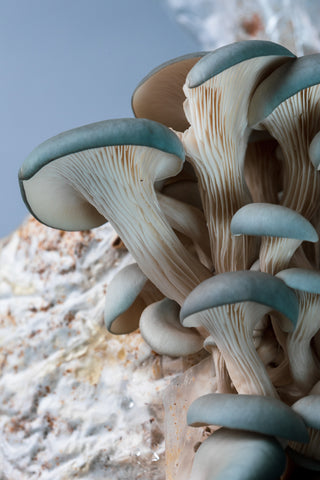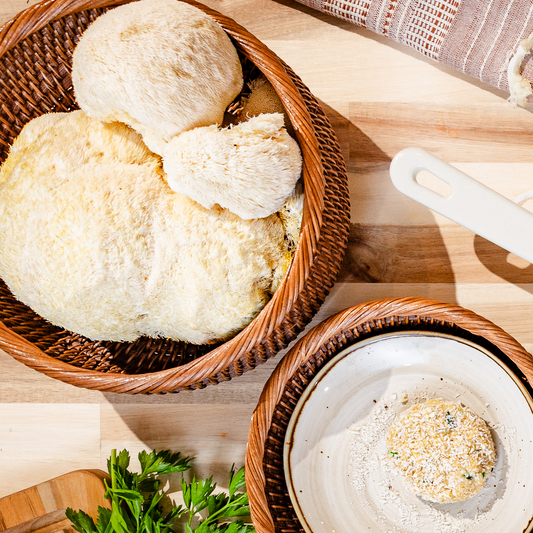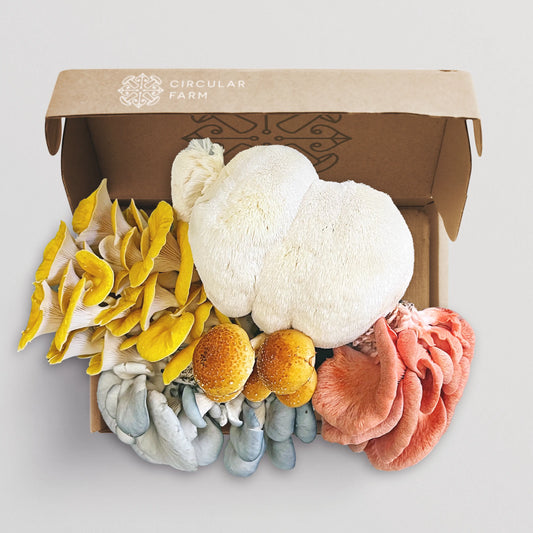Grow mushrooms with these five essential steps of the mushroom growing process.
Let's start with the basics of mushroom cultivation.
You’ll need a few essential elements to begin your mushroom growing process so your mushrooms have an environment in which they can thrive and do what they do best. Mycelium has a few basic requirements that need to be just right in order to produce the beautiful fruiting bodies that you see.
These basic necessities are:
- Nutrient source
- Light source
- Water
- Oxygen
First, decide what type of mushrooms you want to grow and build an environment specifically suited to their preferences. Once your environment is created, simply follow the steps below and watch nature thrive.
Start with the contents of your growing medium
Spores
Spores are single-cell organisms that contain all the genetic material necessary for the species of mushrooms to spread. Spores are located on the underside of the mushroom car in pores, teeth or gills. The mushroom releases spores I order to spread further.
Mycelium
Mushroom mycelium is mushroom spore that has started to root. It often looks like wispy white roots and it spreads underground or below bark until it has consumed all of the nutrients of it growing medium. At that point the mycelium produces a mushroom fruiting body to spread spores.
Spawn
Spawn is usually made with partially hydrated and sterilized grain that has mushroom mycelium mixed in. There are various ways to start with spores although it is tricky and best left to the professionals, so buying spawn from a commercial producer is the option for beginners. A version called plug spawn is specifically designed for use with newly fallen hardwood.
Substrate
Substrate is organic matter that serves as food for the mycelium covered spawn. In nature, mushrooms grow naturally in soil, manure, decaying leaves, and downed trees. Substrate can be made from any organic materials containing carbohydrates and nitrogen. Typical substrate materials include cardboard, coffee grounds, wood chips, straw, and compost. Although at Circular Farm, we use organic soybean hulls and sawdust which is a byproduct of the logging industry.
Fruiting
So you have made it through gathering your spores, inoculating your spawn, making your substrate and now your mycelium is ready to fruit mushrooms, congrats! Now what? Well hopefully you started with building your growing chamber that has the perfect environment for your selected species to thrive. If you have a small growing chamber and you are ready to scale up you might be ready for a Cropbox.
Related Posts

Substrate is a nutrient rich medium that allows for rapid growth of mycelium. The organic materials in substrate prov...
Read More
Welcome to the Circular Farm Mushroom Cultivation Guide, your comprehensive resource for understanding the intricate ...
Read More 




